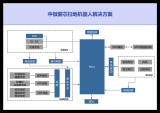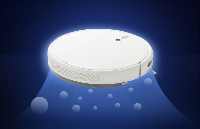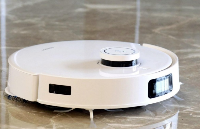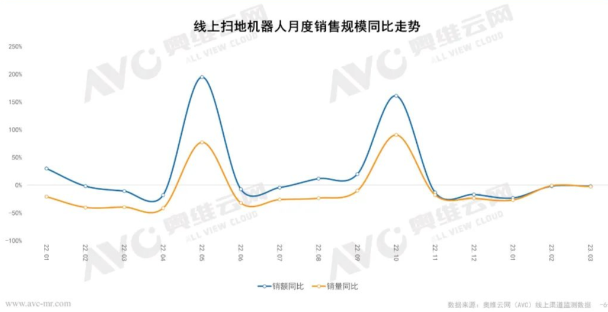商業往事
每月分享幾則有趣的商業小故事(中英雙語),邀請大家和我們一起透過歷史故事,看存儲商業。
 ?
?像掃地機器人一樣學習
本文總計857字
預計閱讀3分鐘
(英文文章在中文文章之后)
第一個掃地機器人叫「倫巴」。當倫巴第一天在你家工作的時候,它就像個醉漢,跌跌撞撞老是撞墻。可是別擔心,它這是在熟悉你家的環境。一兩天之后,它知道了你家的隔間規劃,他就可以把地板掃得很干凈了。
剛開始的時候,倫巴的設計工程師很苦惱,因為每個房間都有不同的尺寸和形狀。有些房間是方形的,有些是L型的,有一些則是圓形的。幾乎不可能幫倫巴設定規格。最后這些工程師放棄了幫它默認規格的想法。他們就讓它去撞墻,然后記錄這些房間的形狀,讓它自我修正。撞一次學乖一次,下次它就不會撞墻了。如果它犯了錯,就記錄下來,自動修正這些錯誤。沒多久,倫巴就像個小狗在你家自由的移動掃地了。
我以前認為我是那種不擅于與機器和數學溝通的人。可是,有一次我和一個成績很好的同學同一組做功課。我觀察到他在算統計學上的資料,他是試了又試了,修改了又修改,直到最后找到了適當的答案。那時我才了解到,我沒那么笨,我只是沒有學習從失敗中找到答案而已。
當IBM剛開始要發展語言翻譯軟件的時候,他們請了很多語言專家,希望這些語言專家可以幫翻譯軟件設立規則。可是語言太復雜了,每個句子的背景都不一樣。最后這些工程師放棄了幫翻譯軟件預先設立規則的想法,他們就把大量的數據全部輸入計算機里,讓計算機自己去學習。
雖然現在的翻譯軟件所翻譯的內容還不識很順暢,但是已經比以前好很多了。至少許多人可以透過翻譯軟件了解這些外文的基本意思了。我們相信計算機的翻譯軟件很快地會越來越好,就像人類的翻譯一樣。
當小嬰兒開始學走路的時候,他們通常只能踏出一兩小步就跌倒了。但是他們會再站起來。這個過程他們會一再的重復,自我修正。最后,他們可以走很多步,很快的小孩子很快就學會順利地走路,甚至會跑了。
這種情況與學習外語的方式非常相似。我們經常犯同樣的錯誤一百次,而不是每次犯一百個不同的錯誤。在學習語言時犯錯誤不應該引起尷尬,這就是學習語言過程的必要的一部分。也就是說,我們必須犯錯誤才能學習語言。這就是我們學習的方式。在許多方面,這是最好的學習方式。不僅僅是學習語言,這種方式也適用于其他領域。
Learning is Like a Floor-Sweeping Robot
The first floor-sweeping robot was named Roomba. When Roomba starts to work in your home the first day, Roomba is like an intoxicated person who is always striking the wall. However, don’t worry about such behavior; Roomba is just becoming familiar with your home. In a day or two, Roomba will know the layout of your home and be able to clean it well.
The designers of Roomba were particularly challenged when they designed the Roomba because each room has a different size and shape. Some rooms are square, some rectangular, some L-shaped and some rooms are even circular. It is basically impossible to preset the navigation rules for Roomba in the design stage. Finally, the designers gave up on trying to pre-program Roomba’s movement patterns. They let Roomba learn by itself by programming it to roam around and strike the walls of a room the first time it moves about a room. Roomba will record the shape of the room such that it can clean it without striking the walls the next time. If it does make a mistake, it will learn from its mistake and automatically correct its record. In no time at all, Roomba will be like a small dog freely moving about your house.
I used to think that I was a man who was a poor communicator with machines and also poor at mathematics. However, once when I was placed on the same team with a good performing classmate, I observed his way of calculating statistical data. He tried and tried again to arrive at a solution, modifying his calculations repeatedly until he homed in on a solution. At that time, I realized something: I was not so inept at mathematics; I just didn’t know how to learn from my failures to find a good solution.
When IBM was developing a language translation software package, it hired many language experts. The software engineers hoped that these language experts could set many rules for the language translation package. However, language is too complicated to cover every scenario with a finite set of rules. Finally, the engineers gave up on this approach. Instead, they input a huge amount of language data into a computer to let the computer learn by itself. Although such language translation software cannot produce really smooth translations for now, it’s getting better all the time. And now, many people use such translation software to get a pretty good idea of what something means in a foreign language. And it is believed that translation software will become almost as good as a human translator a few years down the line.
These examples show us that learning is a trial-and-error process. The most important thing is to know how to review and correct our mistakes.
When a child takes his or her first steps, he or she usually can only take a step or two before tumbling to the floor. But such a child will stand up and try again. This process will repeat itself many times. And before you know it, the child can take many steps in a row. And soon, the child will learn how to walk smoothly and even run.
The situation is very similar to the way one learns a foreign language. We often make the same mistake a hundred times instead of making one hundred different mistakes one time each. Making mistakes when learning a language shouldn’t cause embarrassment and is a necessary part of the language-acquisition process. That is, we have to make mistakes in order to learn language. That’s how we learn. In many ways, that’s the best way to learn. And this applies to other fields, not just learning language.
原文標題:商業往事丨第78話:像掃地機器人一樣學習
文章出處:【微信公眾號:江波龍電子】歡迎添加關注!文章轉載請注明出處。
-
江波龍
+關注
關注
4文章
274瀏覽量
27032
原文標題:商業往事丨第78話:像掃地機器人一樣學習
文章出處:【微信號:江波龍電子,微信公眾號:江波龍電子】歡迎添加關注!文章轉載請注明出處。
發布評論請先 登錄
相關推薦
智能掃地機器人的工作原理和構成
淺談掃地機器人用到的那些電子元器件!
掃地機器人應用解決方案

霍爾開關在掃地機器人中的應用
掃地機器人的核心技術突破
掃地機器人避障技術的發展史
隱形清潔大師:灰塵顆粒物壓電傳感器引領掃地機器人新一輪智能清潔革命

供應 英集芯IP2348,適用于掃地機器人解決方案的鋰電池同步降壓充電芯片
掃地機器人高溫高濕試驗標準詳解及試驗方法

光耦知識分享‖探討光耦技術在掃地機器人的應用

其利天下技術·搭載無刷電機的掃地機器人的前景如何?
掃地機器人CCC認證申請流程與其他產品的區別是什么?





 商業往事丨第78話:像掃地機器人一樣學習
商業往事丨第78話:像掃地機器人一樣學習











評論